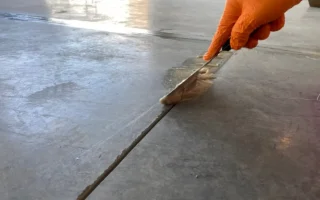Repairing a cracked glass window can seem daunting, but it’s manageable with the right approach and tools. Understanding the cause of the crack helps you tackle similar issues in the future. Prioritizing safety ensures that you remain unharmed during repairs.
Gathering your materials ahead of time streamlines the process. Following a clear step-by-step guide simplifies what might otherwise feel overwhelming. It’s essential to take preventive measures after completing your repair to avoid recurring problems.
Should you face extensive damage or are uncertain about tackling it yourself, don’t hesitate to reach out for professional assistance. Knowing when to call an expert can save time and stress.
With careful attention and proper technique, fixing your cracked window will restore its function and enhance your home’s aesthetics and security. Embrace these tips as part of maintaining your living space effectively.
Understanding the cause of the crack

Understanding the cause of a cracked glass window is essential for effective repair. Several factors can lead to this frustrating issue.
Temperature fluctuations are a primary culprit. When temperatures drop or soar, glass expands and contracts. This stress can create cracks over time, especially in older windows.
Another common cause is physical impact. A stray ball, falling branch, or even accidental bumps can result in damage. The severity often depends on the force applied and the type of glass.
Poor installation may also play a role. If the window isn’t properly secured, it might shift out of alignment with changing weather conditions.
Natural wear and tear can’t be ignored. Age takes its toll on any material glass, making it more susceptible to fractures as time passes. Understanding these causes helps you address not just repairs but preventive measures, too.
Safety precautions before starting the repair
Before you dive into the repair process, take a moment to prioritize safety. Working with glass can be hazardous if you need to be careful.
First, wear protective gear. Safety goggles are essential to shield your eyes from sharp shards that might break loose during the repair. Having heavy-duty gloves will keep your hands protected from cuts and scrapes.
Ensure your workspace is clear of clutter. A tidy area allows for better movement and reduces the risk of accidents. Work in an outdoor or well-ventilated room to avoid inhaling dust or debris.
It’s also wise to keep children and pets away from the area while you’re working. This minimizes distractions and prevents anyone from getting injured unexpectedly.
Materials needed for the repair

You’ll need a few essential materials to repair a cracked glass window. Start with safety gloves to protect your hands from sharp edges. Safety goggles are also crucial; they shield your eyes during repair.
Next, gather a clear epoxy or glass adhesive. This will help bond the cracked pieces securely together. A putty knife can assist in applying the adhesive smoothly.
After application, you’ll want some fine sandpaper for any rough spots around the crack. A clean cloth is necessary, too, as it helps wipe away excess glue and keeps everything tidy.
Having painter’s tape on hand is wise. It holds the repaired area in place while drying, ensuring a tight seal without shifting. With these materials ready, you’re well-equipped to tackle that crack.
A step-by-step guide to fixing a cracked glass window
Start by cleaning the cracked area. Use a glass cleaner and a soft cloth to remove dirt and debris. This ensures proper adhesion of any materials you’ll use later.
Next, assess the extent of the damage. You can fill it with epoxy or clear nail polish if it’s just a hairline crack. For larger cracks, consider replacing the entire pane.
If replacement is necessary, carefully measure the dimensions of your window frame. Purchase a glass piece that fits snugly within these measurements.
Wear gloves during handling to protect yourself from sharp edges. Remove any broken shards from the frame before inserting new glass.
Apply glazing putty around the edges for extra sealing once your new pane is in place. Smooth it out evenly for an attractive finish.
Prevention tips for future cracks
To keep your windows intact, consider investing in window film. This adds a protective layer and can help absorb some impacts.
Regular maintenance is essential. Check for signs of wear around the edges or any existing damage. Address these issues before they worsen.
Temperature fluctuations can also contribute to cracks. Use weather stripping or caulking to insulate your windows better. Keeping indoor temperatures stable minimizes stress on the glass.
Avoid slamming doors nearby, as this vibration may travel through walls and affect windows. Instead, close them gently to reduce impact forces.
When to call a professional for help
Not every cracked glass window is a simple fix. If the crack runs across the entire pane or is larger than a few inches, it’s time to consider professional help.
Windows plays a crucial role in your home’s insulation and security. A significant crack compromises both. DIY repairs might not provide the durability needed for these critical functions.
Feel free to ask for assistance if you feel uncertain about your skills or lack the necessary tools. It’s better to invest in expert services than risk further damage.
Also, if the window frame shows signs of warping or damage, professionals are equipped to assess and rectify underlying issues that might cause recurring problems. Prioritize safety and effectiveness when dealing with fragile materials like glass; sometimes, it’s best to leave it to those who know best.




